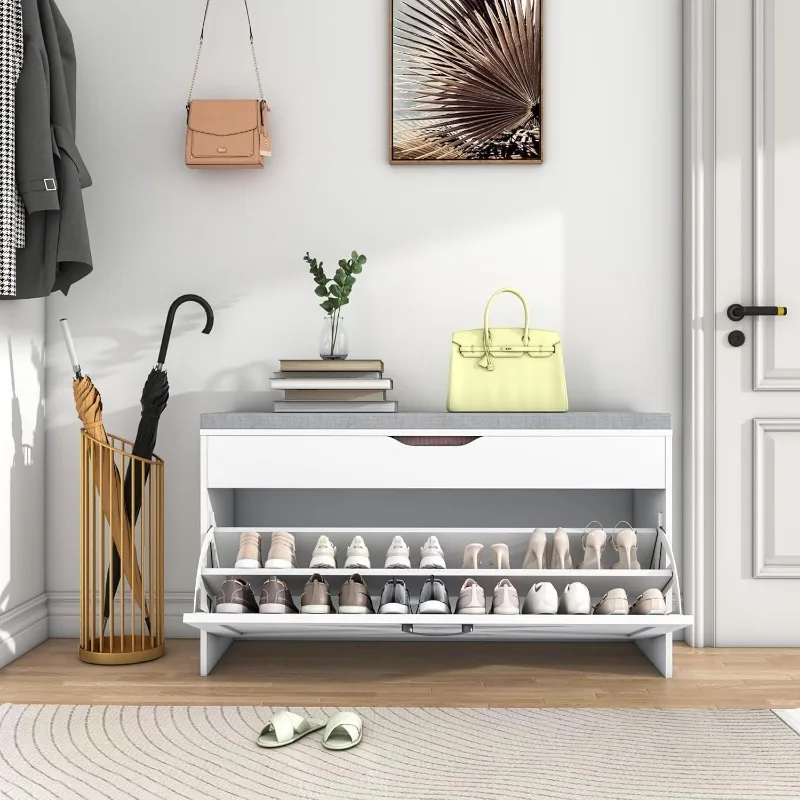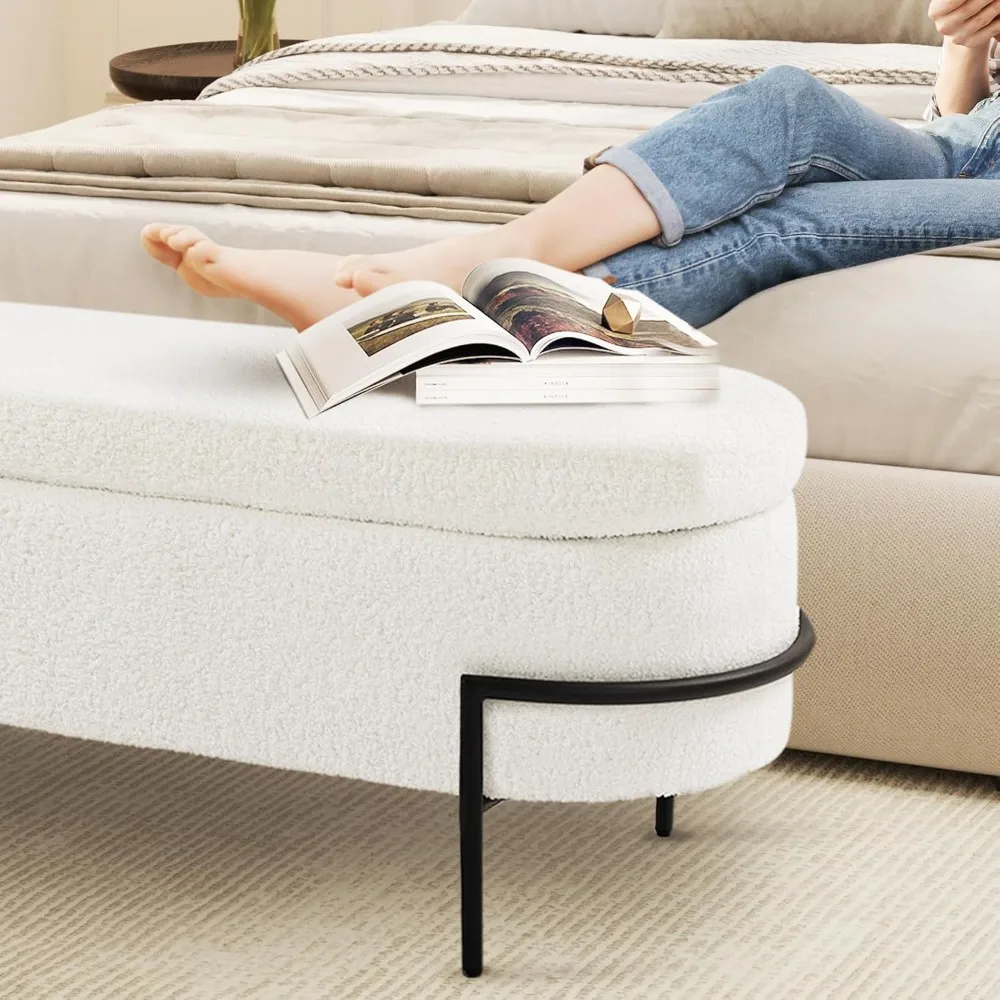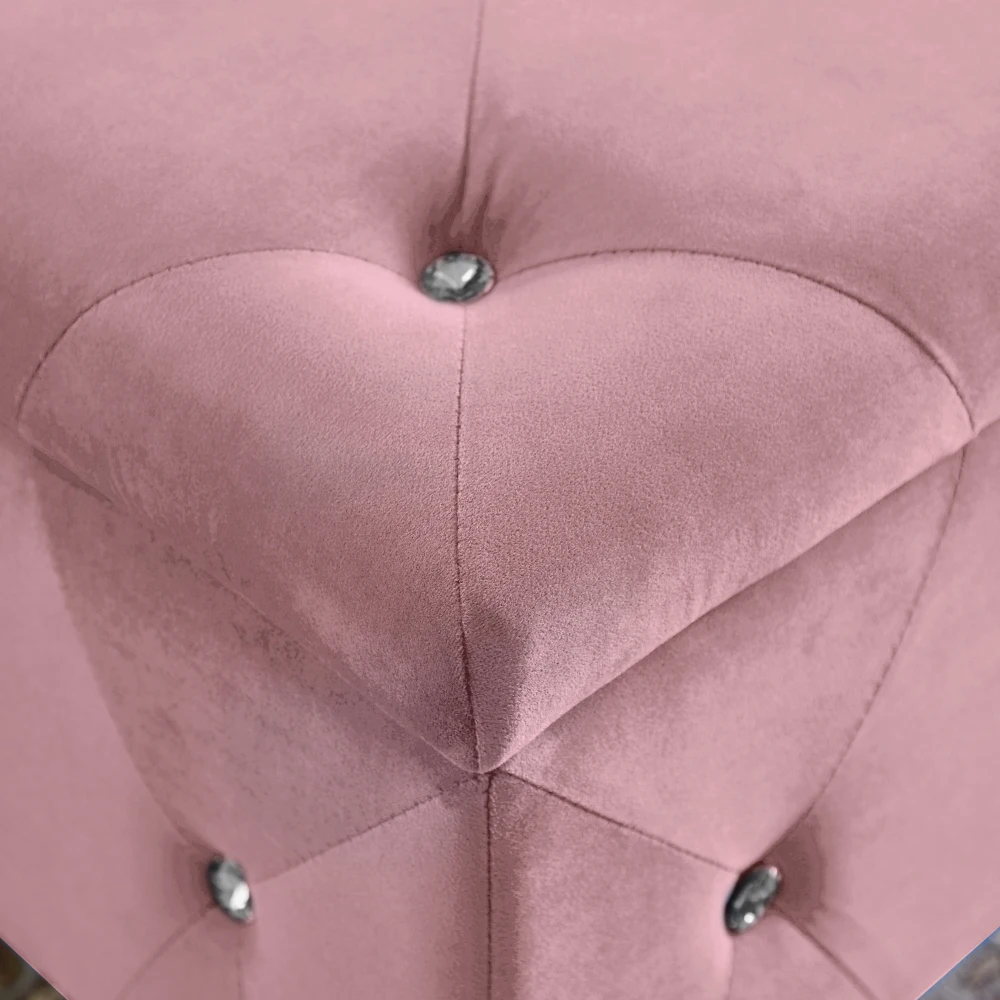Understanding the Challenge: Why Small Hallways Need Strategic Design
Small hallways often present significant design challenges for homeowners. Despite their compact size, these spaces serve as the first impression of your home and deserve thoughtful attention. The typical modern hallway measures just 3-4 feet (0.9-1.2m) wide, creating limitations that require strategic solutions.
The most common challenges of small hallways include:
- Limited floor space for furniture and movement
- Awkward traffic flow, especially in multi-person households
- Insufficient storage for everyday essentials
- Poor lighting that creates a cramped feeling
- Difficulty establishing style in a functional space
This is where slim benches enter as the unsung heroes of hallway design. These versatile pieces serve multiple functions—providing seating, storage, and style—without consuming precious floor space. Space-saving benches create an organized, welcoming entry while maintaining necessary walkway clearance.
The beauty of a well-designed hallway lies in how it balances aesthetics with practicality, transforming a transitional space into one that enhances your entire home’s functionality and appeal.
Measure With Purpose: Getting Your Hallway Dimensions Right
Before selecting any furniture for your small hallway, accurate measurements are essential. This foundational step ensures you choose pieces that fit perfectly without creating obstacles to movement.
Start by measuring the full width and length of your hallway using a tape measure. For width, measure from wall to wall at several points, as older homes especially may have inconsistent dimensions. For length, measure the entire walkable area from entrance to where the hallway opens to other rooms.
Next, identify critical clearance needs:
- Allow minimum 36 inches (91 cm) for comfortable walkway space (this also meets ADA requirements)
- Measure door swing paths to prevent blocking
- Note the location of light switches, vents, and outlets
- Consider transition points where the hallway meets other rooms
When determining appropriate bench dimensions, subtract your needed walkway clearance from the total width. The remaining space indicates your maximum bench depth. For most small hallways, benches between 9-15 inches (23-38 cm) deep work best, allowing proper traffic flow while providing functional seating.
Creating a simple floor plan sketch on graph paper can help visualize how different narrow entryway bench options might fit your specific space constraints. Remember that even the most beautiful bench becomes an annoyance if it makes daily movement through your hallway difficult.
The Perfect Fit: Choosing Slim Benches for Narrow Spaces
In the world of hallway furniture, “slim” typically refers to benches under 15 inches (38 cm) in depth—narrow enough to sit against a wall without protruding too far into walkways. These space-conscious pieces come in various styles to match your specific needs and available space.
The most popular slim bench types for small hallways include:
- Wall-mounted/floating benches: These create an illusion of more floor space and eliminate legs that can make areas feel cluttered
- Built-in shoe storage benches: Combining seating with compartments for footwear organization
- Narrow upholstered benches: Adding comfort and textile interest in minimal space
- Lift-top storage benches: Maximizing interior storage while maintaining a clean exterior
- Minimalist wooden designs: Offering visual lightness through simple lines and open construction
- Metal-frame options: Providing durability with less visual weight
When selecting materials, consider the high-traffic nature of hallways. Solid wood offers timeless durability, while metal frames provide strength without visual heaviness. For upholstered options, look for performance fabrics that resist stains and wear.
The ideal small entryway bench should balance size constraints with your specific functional needs. A complete guide to choosing compact benches can help you navigate all the available options and features to find your perfect match.

Style Meets Function: Design Principles for Small Hallway Benches
Designing small hallways requires strategic thinking that balances aesthetic appeal with practical considerations. When space is limited, each design choice carries greater impact.
Several key design principles can guide your small hallway bench selection:
Visual lightness: Choose pieces with open spaces beneath or between components to create a sense of airiness. Benches with visible legs rather than solid bases make spaces feel less confined.
Proper scale: Select furniture proportional to your space. Oversized pieces, regardless of how beautiful, will make a small hallway feel cramped.
Simplified forms: Clean lines and minimal ornamentation prevent visual clutter in tight spaces. Modern entryway bench designs often excel here with their straightforward approach.
Material consistency: Limit material variety to create a cohesive look that doesn’t overwhelm the eye in a small area.
When matching bench style with your home’s aesthetic, consider how the piece connects with adjacent rooms. A bench in Scandinavian, mid-century, or minimalist styles often works beautifully in small spaces due to their inherent emphasis on function and simplicity.
Color selection plays a crucial role too. Light-colored benches reflect more light and create an impression of spaciousness, while darker finishes can add sophistication and hide wear. The key is consistency with your home’s overall color story to create visual flow.
Maximize Every Inch: Storage Solutions for Hallway Benches
In small hallways, every storage opportunity is valuable. The right bench can significantly increase your organizational capacity without expanding your footprint.
Consider these storage configurations available in slim hallway benches:
- Flip-top storage: Conceals items while maintaining a clean exterior appearance
- Open shelving: Provides easy access to frequently used items like shoes
- Cubbies or compartments: Helps separate and organize different categories of belongings
- Drawer storage: Keeps smaller items contained and hidden from view
- Combination systems: Incorporates multiple storage types for maximum versatility
To determine which storage type best meets your needs, assess what items you typically need in your entryway: shoes, bags, accessories, children’s items, pet supplies, or seasonal gear. The right entryway bench storage solution should accommodate your most common items.
Beyond the bench itself, consider complementary storage solutions like wall-mounted hooks, floating shelves, or slim cabinets that work in tandem with your bench. Baskets or fabric bins can add organization within bench compartments, keeping smaller items from creating clutter.
Implementing simple organization strategies for small entryway benches prevents the bench itself from becoming a clutter magnet. Establishing habits like immediate shoe storage and daily decluttering keeps your small hallway functioning at its best.

Beyond the Bench: Creating a Complete Hallway Design
A well-designed small hallway requires more than just a bench—it needs complementary elements that work together to maximize both function and appeal. These additional components create a cohesive entry experience while enhancing the bench’s usefulness.
Key complementary elements include:
Wall Storage and Hooks
– Position hooks 5-6 feet (1.5-1.8m) from the floor for adult coats
– Install a second row at 3-4 feet (0.9-1.2m) for children’s items
– Choose slim profiles that don’t protrude too far into walkways
– Consider entryway hall tree systems that combine benches with vertical storage
Mirrors
– Place opposite the front door or brightest light source to maximize reflection
– Choose a shape that complements your hallway dimensions (vertical mirrors for height, horizontal for width)
– Consider mirrors with small shelves or hooks for added functionality
Lighting Solutions
– Wall sconces save space while providing essential illumination
– Flush-mount ceiling fixtures work better than hanging pendants in low-ceiling hallways
– Position lights to eliminate shadows and dark corners
Flooring Considerations
– Durable materials like tile, laminate, or hardwood withstand high traffic
– Runners add color and protection while defining the space
– Choose patterns that visually widen narrow areas
When combining these elements, create visual interest by varying heights. This vertical approach draws the eye upward, making the space feel larger while keeping the floor area open. The key is thoughtful layering that adds functionality without creating a cluttered appearance.
Overcoming Design Challenges: Solutions for Difficult Hallways
Some hallways present particular design challenges that require creative thinking to overcome. These solutions help transform even the most problematic spaces into functional, attractive entryways.
For Extremely Narrow Hallways (under 3 feet/0.9m wide)
Consider wall-mounted fold-down benches that can be tucked away when not in use. Another option is a super-slim console table (6-8 inches/15-20 cm deep) with a small ottoman tucked underneath that can be pulled out for seating when needed.
For Hallways with Multiple Doorways
Map door swing patterns and identify “dead zones” where furniture won’t impede movement. Corner benches can sometimes utilize awkward angles created by multiple doorways. The best small benches for entryways often feature asymmetrical designs that fit these challenging spaces.
For Dark Hallways Lacking Natural Light
Use light-colored furniture with reflective elements like metal accents or glass components. Position mirrors strategically to bounce available light, and choose bench materials with some sheen or gloss. Supplement with warm LED lighting that doesn’t create heat in the confined space.
For Long, Narrow “Tunnel” Hallways
Break up the corridor feeling by creating distinct zones with furniture placement. Use a bench to mark the entry area, then add visual interest along the length with artwork or lighting. Consider using color blocking on walls to visually segment the space and reduce the tunnel effect.
For Awkward Corners or Nooks
Custom-fit corner benches can transform these otherwise wasted spaces into functional areas. L-shaped designs or benches with angled backs can conform to unusual wall configurations while providing maximum seating and storage.
Styling Your Space: Personalizing Your Hallway Bench Area
Transforming your small hallway from purely functional to personally meaningful requires thoughtful styling. The key is adding character without creating clutter in this high-traffic area.
Start with a foundation of practicality—everything in a small hallway should serve a purpose. Decorative elements should either enhance function or bring genuine joy as you enter and exit your home. Minimalist hallway benches for apartments provide an excellent canvas for personal expression without overwhelming the space.
Seasonal updates keep your entryway fresh without requiring major changes:
– Spring: Introduce small potted plants and lighter textiles
– Summer: Add vibrant colors through small accessories and nature-inspired elements
– Fall: Incorporate warm textiles like a small throw or cushion in autumn tones
– Winter: Use subtle holiday elements and soft lighting for a welcoming glow
Personal touches that work well in small hallways include:
– A single striking piece of wall art that reflects your aesthetic
– A small tray on the bench for daily essentials with design appeal
– A signature scent through a slim diffuser or sachets
– Family photos in coordinated frames (wall-mounted to save surface space)
The best styling approach balances open space with carefully chosen accessories. Aim for the “breathing room” principle—leaving some areas intentionally empty prevents the visual overwhelm that makes small spaces feel cluttered and stressful.

Smart Solutions: Technology Integration for Modern Hallways
Today’s hallway can benefit from thoughtful technology integration that enhances organization while minimizing physical clutter. These smart solutions bring modern convenience to even the smallest entryways.
Innovative tech features for hallway benches include:
- Built-in USB charging ports and power outlets for charging devices while seated
- Motion-activated under-bench lighting for nighttime visibility
- Smart storage systems with fingerprint locks for securing valuables
- Wireless charging pads integrated into bench surfaces
Beyond the bench itself, consider these tech enhancements for the entire hallway:
- Smart lighting systems controlled by motion sensors or voice commands
- Digital key organizers that help locate misplaced keys
- App-connected entry systems that eliminate the need for physical keys
- Slim sound systems for ambient music in your entrance area
When choosing modern hallway bench storage solutions with tech features, prioritize those that solve your specific pain points rather than adding technology for its own sake. The best tech enhancements are those that simplify daily routines while remaining unobtrusive.
Nested Goods offers several bench options with discreet technology integration that maintains clean aesthetics while providing modern functionality. These thoughtfully designed pieces demonstrate how technology can enhance rather than complicate small space living.
Budget-Friendly Options: Achieving Style Without Breaking the Bank
Creating a stylish, functional hallway doesn’t require enormous investment. With strategic choices, you can achieve an impressive entryway on virtually any budget.
Consider these approaches to cost-effective hallway design:
Value-Focused New Purchases
– Look for multi-functional pieces that eliminate the need for additional furniture
– Focus on quality construction in a simpler design rather than elaborate details
– Consider affordable entryway bench solutions with clean lines and versatile styling
DIY Enhancements
– Transform basic benches with new paint or stain
– Replace standard legs with more stylish options
– Add cushions for comfort and visual interest
– Install hooks or small shelves above simple benches for added functionality
Strategic Splurges vs. Saves
– Invest in the bench itself for durability in this high-use area
– Save on easily replaceable accessories like baskets and cushions
– Consider floor model or open-box options for significant discounts
Secondhand and Upcycled Options
– Repurpose dining benches, coffee tables, or dressers as entryway furniture
– Refinish vintage pieces for unique character
– Combine elements from different pieces to create custom solutions
The most important consideration when working with a limited budget is prioritizing functionality first. A simple bench that perfectly fits your space and meets your storage needs is better than a more elaborate piece that creates daily frustration with poor fit or insufficient organization.
Your Hallway, Your Rules: When to Break Design Conventions
While design principles provide valuable guidance, sometimes the most effective solution for your specific space requires thinking beyond conventional approaches. The best hallway designs respond to how you actually live, not just how design magazines suggest you should.
Consider these situations where breaking rules might make sense:
- Using a bench perpendicular to the wall in a wider entry section of a narrow hallway
- Selecting an unconventional height bench that addresses specific family needs
- Repurposing furniture not typically used in hallways, like piano benches or outdoor pieces
- Creating asymmetrical arrangements that respond to unusual architectural features
The key to successful rule-breaking lies in understanding why the convention exists before deciding to abandon it. Once you grasp the principle behind the rule, you can find creative ways to achieve the same goal through unconventional means. Space-saving entryway ideas often emerge from this type of flexible thinking about how spaces can function.
Remember that your hallway should serve your needs first and design conventions second. The most successful small spaces are those that perfectly match their owners’ lifestyles, even when they challenge traditional design wisdom.

